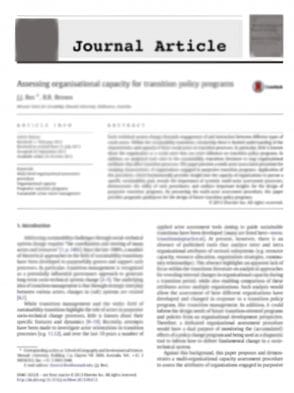Operationalising resilience to drought: Multi-layered safety for flooding applied to droughts.
Abstract
This paper sets out a way of thinking about how to prepare for and respond to droughts in a holistic way using a framework developed for managing floods. It shows how the multi-layered safety (MLS) approach for flood resilience can be utilised in the context of drought in a way that three layers of intervention can be distinguished for operationalising drought resilience: (1) protection against water shortage through augmentation and diversification of water supplies; (2) prevention of damage in case of water shortage through increased efficiency of water use and timely asset maintenance; (3) preparedness for future water shortages through mechanisms to reduce the use of water and adopt innovative water technologies. Application of MLS to the cities of Adelaide, Melbourne and Sydney shows that recent water reforms in these cities were primarily focused on protection measures that aim to reduce the hazard source or exposure to insufficient water supplies. Prevention and preparedness measures could be considered in defining interventions that aim to further increase the drought resilience of these cities. Although further research is needed, the application suggests that MLS can be applied to the context of drought risk management. The MLS framework can be used to classify the suite of plans deployed by a city to manage future drought risks and can be considered a planning tool to identify opportunities for increasing the level of redundancy and hence resilience of the drought risk management system.
